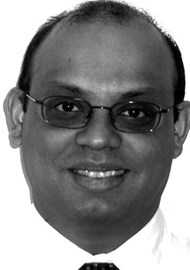This book has a catchy title and due to my interest in developing simulation systems for training in surgery I was delighted to be asked to review. However, I found it very hard going and the first few chapters are so dedicated to the physics of tactile sensing and piezo-electric polymers and so removed from the practice of surgery that I nearly gave up in frustration.
The aim of the book is laudable and there is a place in modern surgical training for all of us to understand simulation. The public also now expect that surgeons are trained appropriately, and patients rightly feel that errors should be minimized during actual surgery.
There were some interesting later chapters on robotic surgery and teletaction. I was particularly interested to read the discussion of the benefits and downsides of robotic surgery, particularly in other surgical specialties, such as cardiac surgery and urology, where great strides are being made. The intuitive benefit of tele-surgery was mentioned, but it is still a long way off before it comes into practice. Teletaction, or the means of presenting information from a distance from a tactile display system would play a big part in tele-surgery, but the transfer validity of this is unproven. This combined with the superior decision-making capabilities of a surgeon means that we are not yet redundant!
The book is written in a readable style for surgeons in some parts, but the physics in it went completely over my head. I am not sure who the target audience is; if it is surgeons, they will have to be pioneers in developing robotic systems with a strong background in physics to boot!





